Prime rib roast is undeniably one of the most luxurious cuts of meat. Imagine its melt-in-your-mouth tenderness combined with a delectable herbaceous crust. Pure heaven!
But what makes it so exceptional? It’s all thanks to the spinalis dorsi, or rib eye cap, which envelops the eye of the roast. This marbled, flavorful fat crisps up beautifully, enhancing both taste and texture.
To experience the full decadence of prime rib, I highly recommend selecting a USDA grade of choice or prime. Don’t shy away from investing a little extra in this special cut; you’ll reap the rewards with an undeniably incredible meal.
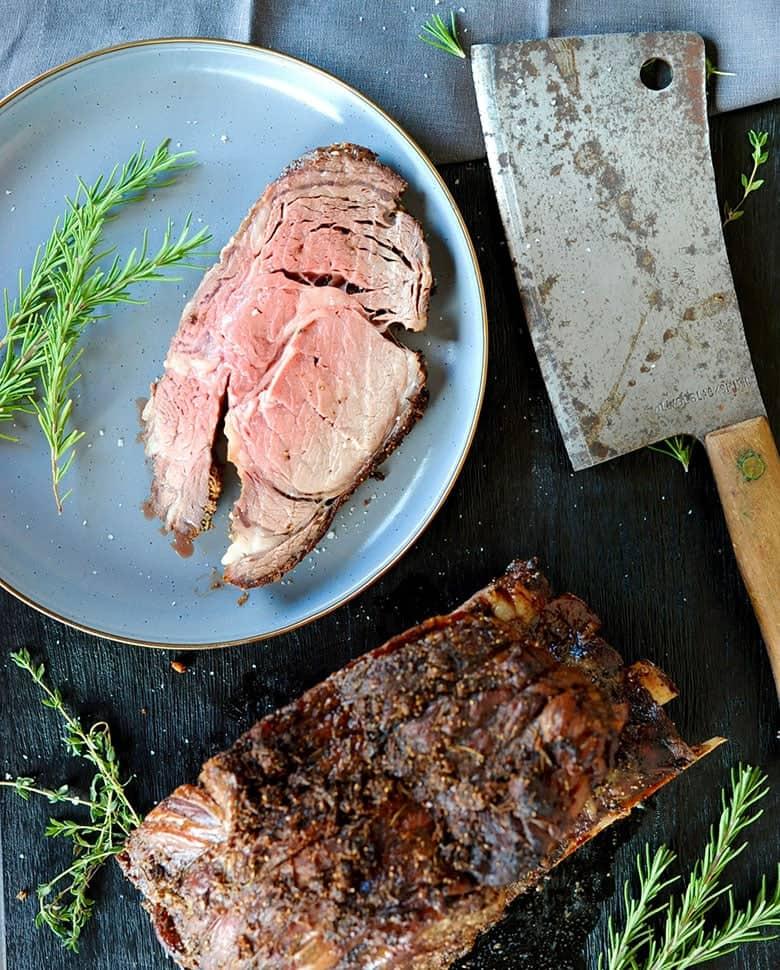
Prepping the Prime Rib
Preparing a prime rib may seem daunting, but fear not – it’s just a few simple steps.
While peeling and trimming are optional, I highly recommend following the rub and rest technique before grilling your prime rib. This ensures maximum flavor infusion.
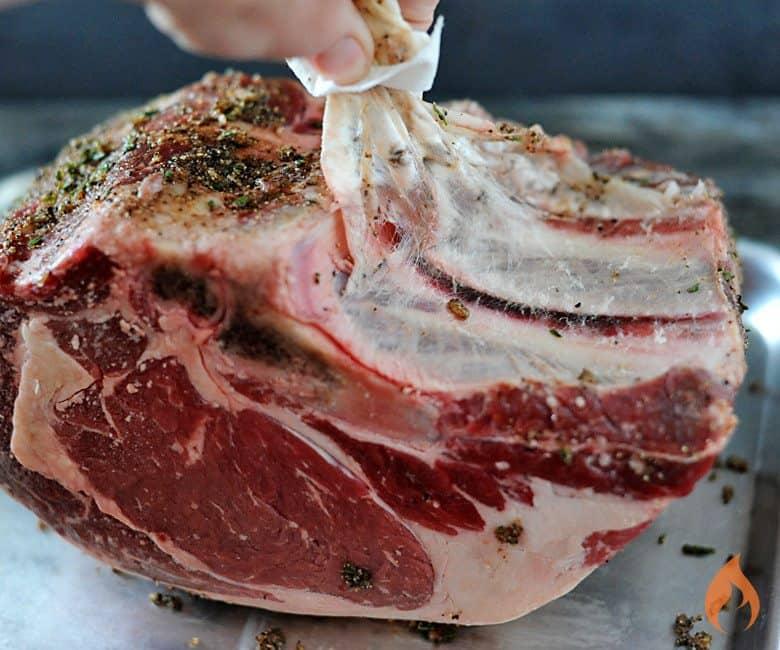
Remove the Silver Skin
If you’ve cooked ribs before, you know the importance of removing the tough silver skin from the back of the bones. The same goes for the rib roast.
While it’s optional, removing the silverskin allows the rub to make more contact with the meat between the bones. To remove it, simply flip the roast upside down and peel it away using a paper towel.
Frenching the Bones
Some fancy restaurants leave the meat intact on each bone, resulting in an aesthetically pleasing presentation. However, if you enjoy gnawing on prime rib bones, you may want to skip this step.
But if you’re up for it, you can find a step-by-step demonstration on how to french the bones in my pork prime rib post.
The Secret Trim
Okay, it’s not exactly a secret, but there’s a special trim you can do to add even more flavor to your prime rib.
Using a knife, slice between the bones and the meat, ensuring not to separate the two entirely. This allows the rub to penetrate the trimmed area, enhancing the taste. For added security, use butcher’s twine to tie the bones back to the roast, especially if you’re cooking it on a rotisserie.
When it’s time to slice your grilled prime rib, simply remove the twine and bones for easier carving. Slice the meat thinly or thickly, depending on your diners’ preferences.
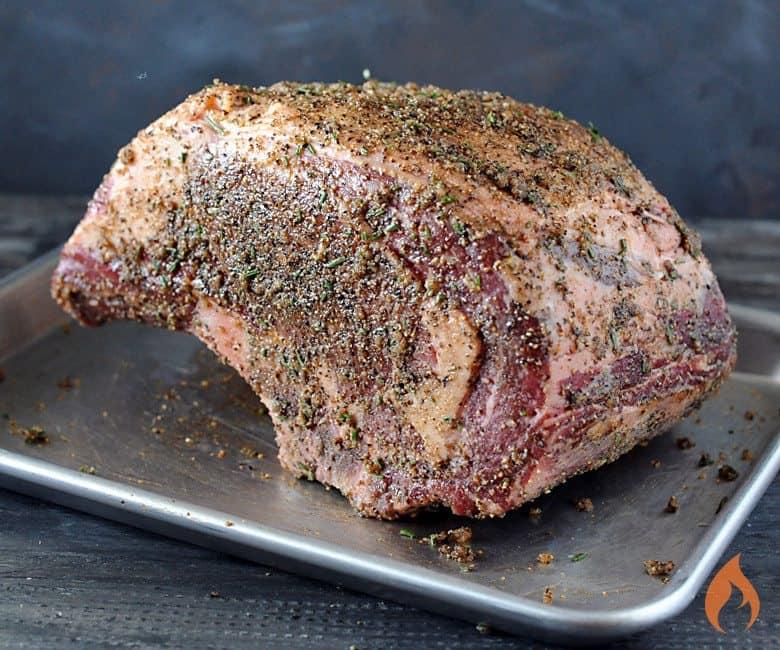
Rub + Rest
Unlike turkey, which benefits from a wet brine in the fridge, prime rib requires a dry brine at room temperature.
Place the prime rib on the counter for 2-3 hours, allowing it to gradually come to temperature before grilling. During this time, generously coat the meat with a mixture of robust herbs, my Brisket Rub, garlic, olive oil, and my secret ingredient – allspice. As the beef adjusts to room temperature, it absorbs the aromatic herbs like an indulgent aromatherapy treatment.
Grilling the Prime Rib
The grilling process involves three stages: slow cook, crust creation, and rest.
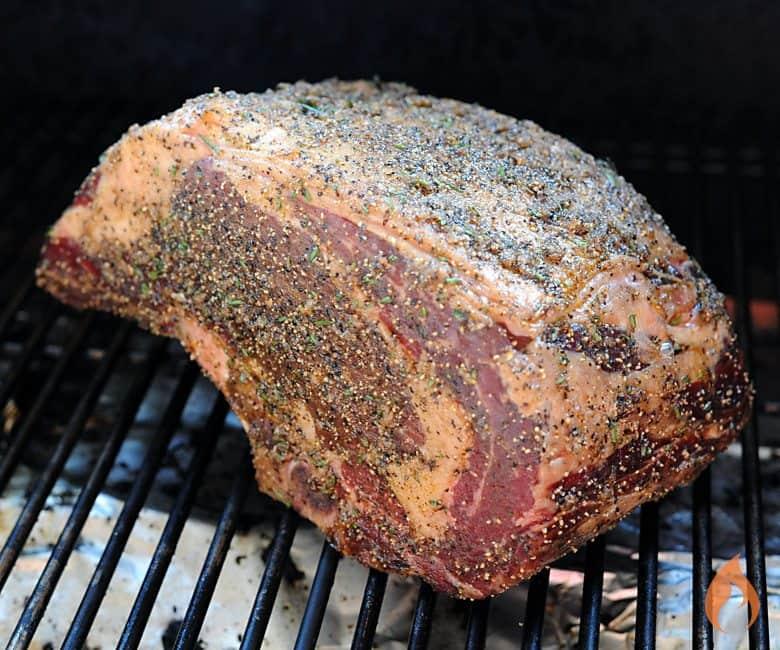
Step 1: Slow Cook
For an incredibly tender prime rib, grill it at a low heat over indirect heat. I find that 250°F works best. Remember to place the prime rib on the grill with the fat side up, allowing any rendered fat juices to infuse the center of the roast.
At this stage, you don’t want to cook the meat entirely. Instead, aim for an internal temperature of 110°F. I recommend using a reliable digital thermometer, such as the ThermoWorks Smoke, which alerts you when your meat reaches the desired temperature.
A six-pound rib roast typically takes around 2 hours to slow cook.
Step 2: Crust Creation
The highlight of a prime rib is undoubtedly its herbaceous crust. To achieve this, increase the grill’s heat to 400°F.
Continue grilling over indirect heat until the internal temperature reaches 135°F. Remember to switch to a digital thermometer that alerts you when the meat is cooked to perfection.
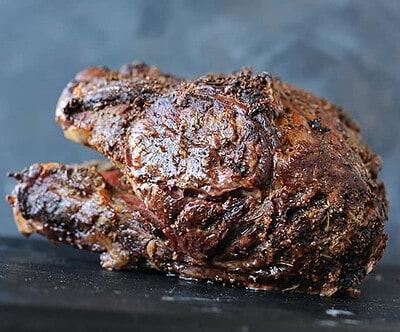
Step 3: The Rest
Once your prime rib reaches 135°F, remove it from the grill and let it rest for 30 minutes. This crucial step allows the magical juices to reabsorb into the meat, ensuring each bite is succulent.
Resting is vital; cutting the prime rib right away would cause those flavorful juices to be lost on the cutting board. And fear not, as the meat continues to rise in temperature by 5-10°F during the resting period. If desired, serve it on heated plates for additional warmth.
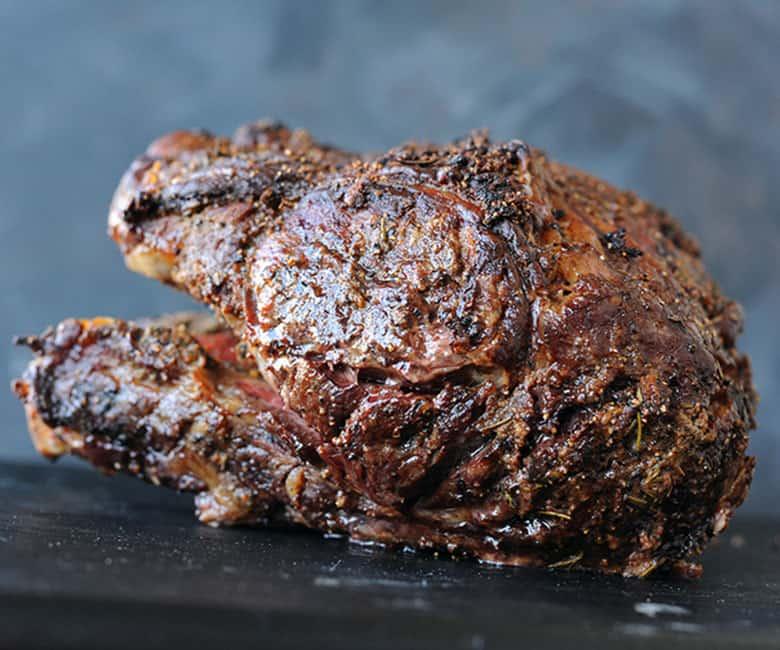
How to Please Everyone
While I personally prefer medium-rare beef, I understand that not everyone shares the same taste. If your guests prefer their meat cooked longer, go ahead and extend the cooking time.
For those who like their beef extra well-done, cut their slice and return it to the grill to cook to their desired doneness.

How to Grill Prime Rib with Your Grill
Pellet Smoker
A pellet smoker is the easiest grill to use. Simply adjust the temperature as you would with an oven. The advantage lies in the smoky flavor imparted by wood pellets. I recommend using a combination of cherry and oak pellets. Use the included thermometer to monitor the meat’s internal temperature.
Gas Grill
To create an indirect heat zone on a gas grill, turn on one burner and set it to low or medium until the grill reaches 250°F. For a smoky flavor, use an Amazen Pellet Tube Smoker with cherry pellets or create a foil pouch with wood chips. Place the prime rib on the opposite side of the grill and rotate it halfway through cooking. Increase the heat by turning one burner to high, and if necessary, turn on another burner to reach 400°F. Rotate the meat during the high-heat stage to ensure even cooking, but maintain indirect heat to prevent flare-ups.
Charcoal Grill
Light your coals until they turn gray. Push them to one side of the grill and adjust the grill vents until the temperature reaches 250°F. Place the meat on the side without coals. For that smoky flavor, add wood chips or hickory charcoal briquettes to the coals. Increase the heat by adjusting the vents or adding more briquettes.
Big Green Egg
Ignite the coals and place the plate setter to distribute the heat evenly. Adjust the bottom and top vents until the grill reaches 250°F. Add wood chips for additional smoke. To raise the heat, open both vents to allow more air flow. You can also use devices like the Flame Boss to automate heat control.
Oven
Not everyone has discovered the joys of grilling yet, but fear not – you can still roast prime rib in the oven. Follow the same steps outlined above, adjusting the temperature from 250°F to 400°F and monitoring the meat’s internal temperature.
Answers to Your Most Common Questions
To save you from reading through all the comments, here are the most frequently asked questions:
How large of a prime rib do I need?
For bone-in prime rib, plan on one pound per person or one bone for every two people. A three-bone prime rib usually weighs about six pounds and serves six adults. If you have additional meats and sides, you can slice the meat thinner and get three servings per bone.
How long does it take to cook a prime rib?
This recipe is for a six-pound prime rib, which cooks in approximately three hours (2 hours on low, 30 minutes on high, and 30 minutes for resting). For larger prime ribs, cook on low for 20-30 minutes per pound, followed by 45-60 minutes on high until reaching the desired doneness. The resting time remains the same.
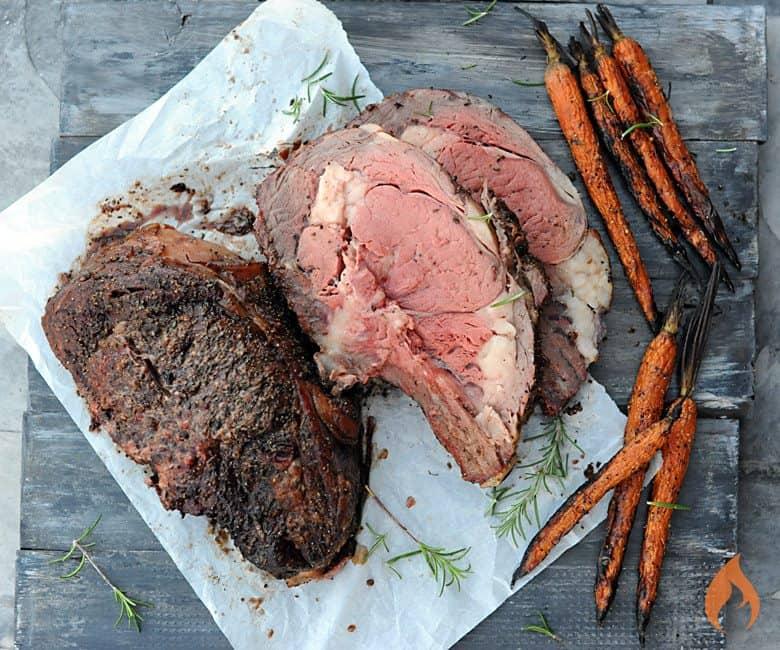
How to Make Delicious Gravy to Go with Your Prime Rib
For gravy lovers, I recommend roasting vegetables underneath the prime rib to create a rich, flavorful broth.
In a pan that is 1-2 inches deep, add sliced onion, carrots, celery, and fresh herbs. Pour in beef broth, water, and red wine. Place a rack over the pan and rest the prime rib on top during the initial cooking stage. Once it’s time to raise the heat, remove the pan from the grill.
To make the gravy, strain the broth and set it aside. In a sauce pot, create a roux by cooking down flour and butter. Then, add the broth and stir until thickened.
Remember, when it comes to grilling a prime rib roast, you’re not just preparing a delicious meal – you’re creating an experience. So gather your loved ones, fire up the grill, and savor each mouthwatering bite. For more grilling tips and recipes, visit Ekilove.



